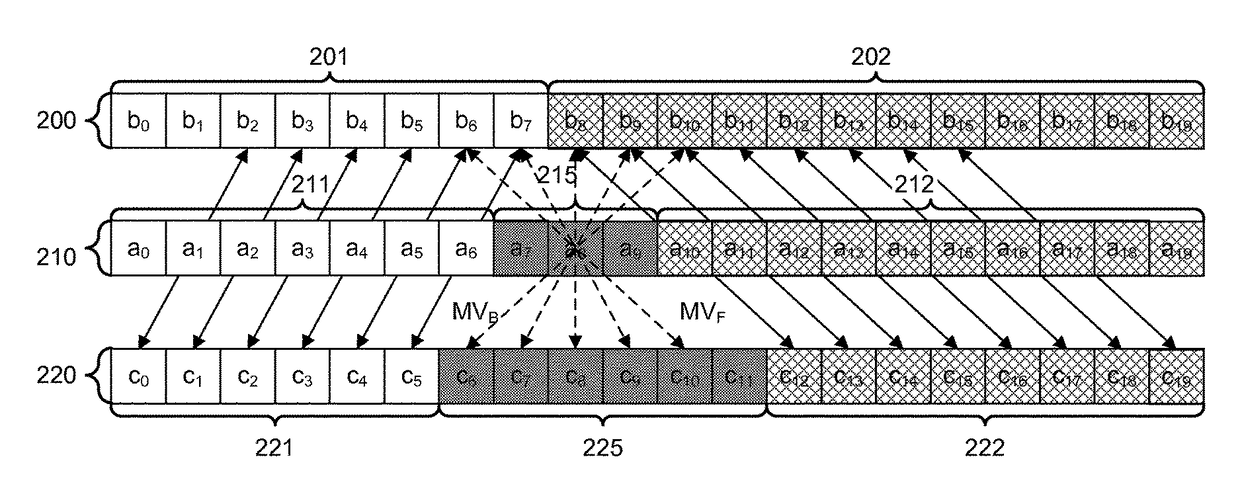Method for detecting occlusion areas
a detection method and occlusion area technology, applied in the field of image processing, can solve problems such as artifacts that may occur in temporal interpolation, and achieve the effect of reducing the computation complexity of image processing and improving efficiency
- Summary
- Abstract
- Description
- Claims
- Application Information
AI Technical Summary
Benefits of technology
Problems solved by technology
Method used
Image
Examples
Embodiment Construction
[0024]In the present invention, a block-based method is developed to detect occlusion areas of an image based on two neighboring images. The current image may be an existing image or an image to be interpolated between two neighboring images. Each block of the current image is processed to determine whether it is an occlusion block or not. An occlusion block is referred to a block of pixels that contains one or more occluded pixels. In another word, at least one pixel of the occlusion block is located in the occlusion areas of the image.
[0025]FIG. 2 illustrates an example of matched blocks determined by bidirectional motion estimation performed on two neighboring frames of one interpolated frame according to an embodiment of the present invention. Frame 200 and frame 220 are two consecutive pictures captured, where frame 220 corresponds to a later frame in time than frame 200. Frame 200 comprises a background area shown by area 201 and a foreground area shown by area 202. Frame 220 ...
PUM
 Login to View More
Login to View More Abstract
Description
Claims
Application Information
 Login to View More
Login to View More - R&D
- Intellectual Property
- Life Sciences
- Materials
- Tech Scout
- Unparalleled Data Quality
- Higher Quality Content
- 60% Fewer Hallucinations
Browse by: Latest US Patents, China's latest patents, Technical Efficacy Thesaurus, Application Domain, Technology Topic, Popular Technical Reports.
© 2025 PatSnap. All rights reserved.Legal|Privacy policy|Modern Slavery Act Transparency Statement|Sitemap|About US| Contact US: help@patsnap.com



